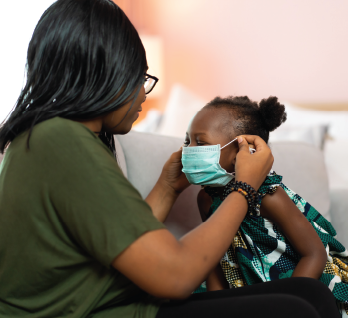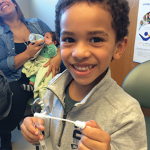
BigPixel Photo / shutterstock.com
It is nine months into the COVID-19 pandemic in the U.S. and the third wave is upon us, overwhelming hospital systems in many states across the country. But the alarms are being sounded for another looming pandemic as well. As early as spring 2020, significant increases were documented in the prevalence of depression and anxiety, substance use, trauma and stress-related disorders, and suicidal ideation.
Like so many other aspects of the COVID-19 pandemic, the psychological effects fall unequally across U.S. populations: Black, Latinx and other minorities are disproportionately affected. Essential workers, a term that quickly evolved to encompass anyone not privileged to work from the safety of their home, are disproportionately harmed. Healthcare workers, especially those who are caregivers, have the dual burden of witnessing the worst this virus can do and bearing the anxiety of potential exposure to themselves and their families. Individuals with rheumatic conditions face the compound stressors of increased risk of infection, physical isolation and managing chronic conditions in a setting riddled by limitations in care, medications and providers.
Although the physical risk of COVID-19 is much greater in older adults, young people appear to be particularly affected by the indirect emotional consequences of the pandemic. Between March and June 2020, the Centers for Disease Control and Prevention conducted a national survey of mental health symptoms in adults and found that more than 25% of young adults aged 18 to 24 years old had suicidal ideation, compared with 2% of adults aged 65 or older—the age group most likely to die from COVID-19.1
The rates of suicidal ideation in young adults are especially concerning given that suicide was already the second-leading cause of death among 10- to 24-year-olds prior to the pandemic.2 Suicide in young people has been a recognized public health crisis, with an alarming increase in the past several years, especially among Black girls. Even mild and moderate distress can take a toll on children and their emotional and physical health trajectory throughout their lives. Thus, addressing psychological distress in youth is of utmost concern and urgency, specifically at this unique point in history.
Guidance Available
In late October, the American Academy of Pediatrics (AAP) released interim guidance on addressing the emotional health of children, adolescents and families during the pandemic.3-5 In the guidance, the AAP emphasizes the pandemic has only made it more important for us to continue to integrate mental health into our standard of care in pediatrics.
The authors of the AAP guidance statement and other pediatric mental health experts raise concerns about specific high-risk groups that require extra attention: low-income youth, youth from marginalized minority groups affected by what has been termed the twin pandemics of COVID-19 and racism, and youth with chronic diseases and special healthcare needs.
For many pediatric and adult rheumatologists, current standard of practice does not involve a systematic approach to address mental health. This includes the low-hanging fruit of screening for depression and suicidality that has become standard of care in general medical settings. For rheumatology clinics, problem areas are a lack of resources and a lack of guidance. These are important, but not insurmountable, problems.
The pediatric rheumatology community, specifically, can look to the work that has been done in pediatric diabetes and cystic fibrosis. These communities have developed their own guidance statements regarding the integration of screening and addressing depression, anxiety and suicidality in their clinics. Similar guidance statements for pediatric rheumatology providers could help inform and standardize approaches to mental healthcare.
Over the past two years the Childhood Arthritis and Rheumatology Research Alliance Mental Health Workgroup has been working toward systematically developing similar guidance tailored to pediatric rheumatology clinics. A taskforce of mental health providers, patients and parents, patient advocates and pediatric rheumatologists set out to develop and then iteratively revise guidance on screening and addressing the most common mental health problems that face youth with rheumatologic conditions.
No one expects that every pediatric rheumatologist, or even many pediatric rheumatologists, will be able to comprehensively address mental health within the confines of their clinic. What we can work toward is beginning to partner with patients and families to help detect mental health problems and connect patients and families to the resources available in our institutions, communities and schools. Approaches will have to be tailored to the specific needs of each population and the resources available in each clinical setting.


